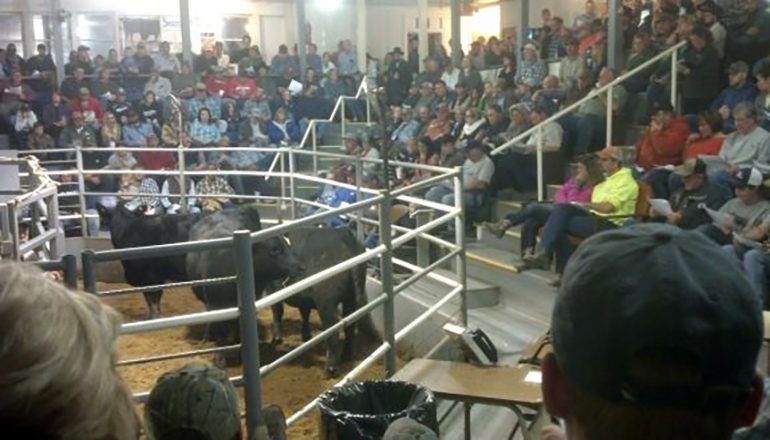“Don’t look in the rearview mirror,” a University of Missouri Extension economist told cattle producers at the Kirksville Livestock Symposium.
Scott Brown said record-setting high cattle prices are not likely to occur again soon. “The beef outlook approaches a new near-normal trend.”
On the commodity price trend lines, Brown knocked out prices from the last four years. Without that volatility, his chart lines show a slow upward trend.
“Cattle prices are lower, but not catastrophic,” Brown said. What he called a “phenomenal time of very high prices” is over. You won’t see $3 calf prices again soon.
The upsurge in prices resulted from the convergence of outside events. First, record droughts brought sharp drops in cow numbers. That sent less beef to market.
“High prices were more supply-driven than demand-driven,” Brown said. With record prices, producers responded by rebuilding beef herds. That shift continues to expand beef supplies.
There will be more beef through 2018-19.
Now prices must become demand-driven, Brown said. What he calls a “mountain of meat” must be moved by more consumers or lower prices.
“I am doing my part, but you must eat a lot more beef,” Brown told the audience. “Or we must sell more in export.”
Foreign trade can lift prices. Southeast Asia offers an opportunity for more trade. “China could be particularly important,” Brown said. Trade must not be shut down.
There is greater economic growth and larger growing populations outside of the United States than within our borders. Those populations prefer our quality beef, he said.
It wasn’t just the drought that added volatility. Record demand for ethanol and the worst recession in decades affected feedstock prices.
We’re not likely to see that combination of events again, Brown said. “From 2008 to 2012 gave amazing revenues for U.S. agriculture.”
In the long-term trend, current prices are not that bad, Brown said. It’s just that these prices looked a lot better on the way up than on the way down.
When cattle prices are uncertain, Brown told producers to shift their focus. “You can’t control prices you sell for, but you can control costs of production.”
He showed USDA numbers on differences between low-cost and high-cost farms. Low-cost producers tended to also get better revenues. That indicates better management on both sides of the equation.
Management can easily make a $100 difference in return per acre. “That can make a difference between profit and loss.”
Knowing the cost of producing a calf is needed when you lock in a price. “If you don’t know your costs, you can lock in a loss,” Brown said.
Brown didn’t ask for a show of hands when asking if anyone had locked in recent high calf prices. Often in the past when he asked, no hands went up.
Brown did point out the downside risks on cattle prices. There’s still a need for risk management.
One trend in beef pricing can aid risk management. Prices for lower-quality select-grade beef at the packers trend lower. Meanwhile, prices for USDA prime beef remains steady and higher.
“Investing in better genetics can boost revenue,” Brown said. “That’s risk management.”
Other MU Extension state specialists gave tips on increasing value and cutting loss. Agronomist Craig Roberts told how to cut losses on cattle grazing toxic tall fescue pastures. Replacing K-31 fescue with novel endophyte fescue improves gains and herd health.
Jared Decker, MU Extension geneticist, told that DNA testing of replacement heifers boosts genetics. Recent sales of Show-Me-Select heifers showed that heifers with known genetics sold for big premiums.
“Help is available from your regional extension specialists,” Brown said. “I am willing to help.”






